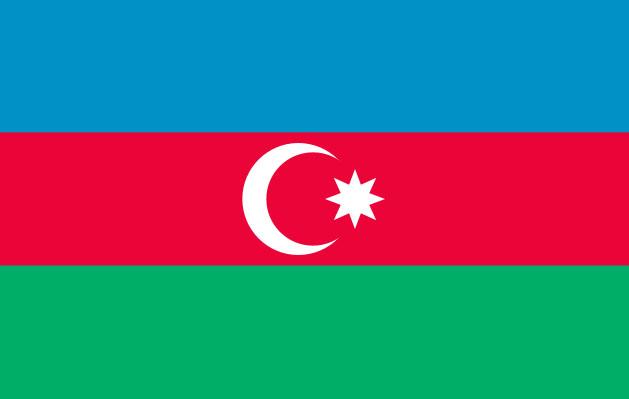Young Scholars on the Silk Roads: An Interview Series - Lia Wei
The Young Scholars on the Silk Road interview series seeks to empower young people, by giving youth a platform from which to transmit their often-unheard voices. Via this series young scholars hailing from different countries across Europe, the Middle East, Africa and Asia will be interviewed to share their research and reflections on the ancient Silk Roads.
Lia is an art historian and archaeologist focusing on lithic heritage, routes and frontiers. She graduated last year from SOAS, University of London, and is now teaching at the department of Archaeology, Renmin University of China. She is a practicing artist in calligraphy, landscape painting and seal carving, curating festivals on contemporary ink and replication techniques.
I remember from our initial conversations that your background really encapsulates the cultural blends that the Silk Road is renowned for. Could you introduce it please?
Lia Wei: I was born in Italy only because my mother, who is from a town called Alatri in the mountainous part of Lazio, went back there at the end of her pregnancy, while my parents were living in Beijing. Alatri has thick megalithic walls attributed to “Asian” groups of incomers during the iron age.
I am Belgian by nationality, since my father is Belgian, although we do not have Belgian ancestors. His own father left China during the 1940s, and met her spouse in Antwerp who herself was from a British mother and a Chinese father, who had left China a generation earlier, still during the last Empire… My country of adoption in many ways is actually China, as I spent my early childhood there and returned at the age of 19 to study calligraphy.
What about the Silk Roads is special to you?
I believe in nuance, so the thing that I like the most about the Silk Roads is the added plural, the “s” on the end of “Road”. To me they represent the interweaving of innumerable interpersonal narratives.
What drives you to study these ancient routes today?
As an archaeologist studying the Silk Roads, I have to deal with long-distance borrowings and cultural influence a lot, drawing neat, straight lines across thousands of kilometers of land to connect two cultural facts. When I find evidence of shared intentions and shared communications in the archaeological record, I feel emotionally engaged with human history.
You mentioned that you are also an artist. Can you talk about your artistic practice and how it relates to the Silk Roads?
I first arrived in China as an apprentice in calligraphy, landscape painting and seal carving. These traditional practices, which I studied as a child in Belgium under a Taiwanese mentor, are intimately linked with the history and geography of East Asia.
I am also interested in writing on monumental epigraphy – texts inscribed on stone. The Silk Roads is all about bridges and connections, and this art form is the perfect bridge between sign and matter, the bridge between turning literature into material culture and vice versa. I ended up collaborating with a Chinese calligrapher on a project entitled “Biface Graphy”, where we wrote simultaneously on long silken scrolls, forging a non-verbal language of our own.
A second step taken was to spatialize the resulting scrolls in their full scale. Through a series of installations which we called “Open Scroll”, “Biface Graphy” exited the literati’s studio enclosed universe and invaded man-made architectures and natural landscapes. Hundreds of meters of soft silken scrolls are displayed outdoors, expanding the dimensions of calligraphy in open air at the Great Wall, a temple of Confucius in Chongqing and The Arsenale in Venice.
That sounds like a fascinating project. You must be familiar with UNESCO’s pillars of Intercultural dialogue and Common Cultural Heritage? Do they feature in your work, and if so, how?
My collaborative artistic practice leads me to travel, translate, and constantly adapt my tools of expression and discourse. In the last two years I have been curating exhibits on rubbings, an early technique of replication from stone to ink on paper and contemporary ink (Ink Art Week in Venice, Lithic Impressions, INK Brussels 2019).
The exhibits are planned as travelling projects and gather artists from China and internationally around common practice and questions. The discourse I am building through the years is facetted, as the projects end up acquiring a life of their own, inhabiting the people and places they have integrated in their narratives.
Finally - how do you think young people can get more involved in activities relating to the Silk Roads?
As a young researcher I received several scholarships and travel grants. This is one tangible way to facilitate young people playing a larger role in the study of the Silk Roads, but it is not only a question of funding. What helped the most was to have local institutions willing to collaborate, facilitate my fieldwork and guiding me to grow together with the land and the people I was investigating. I actually ended up finding a job at the institution that used to host me, the Archaeology department at Renmin University of China.
See also:
Young Scholars on the Silk Roads: An Interview Series - Kun Liang
Young Scholars on the Silk Roads: An Interview Series - Susan Afgan, Afghanistan
Young Scholars on the Silk Roads: An Interview Series - Ceren Çetinkaya, Turkey
Young Scholars on the Silk Roads: An Interview Series - Moundhir Sajjad Bechari, Morocco
Young Scholars on the Silk Roads: An Interview Series - Grzegorz Stec, Poland
Young Scholars on the Silk Roads: An Interview Series - Robin Veale, France






